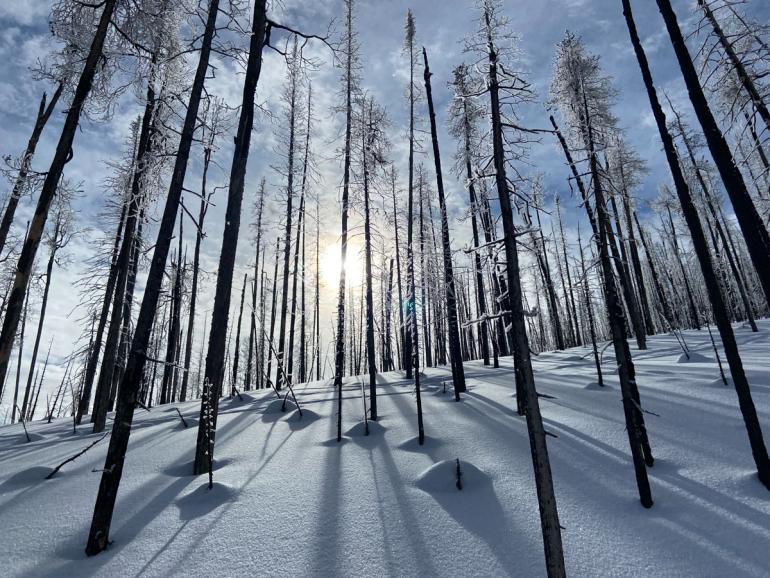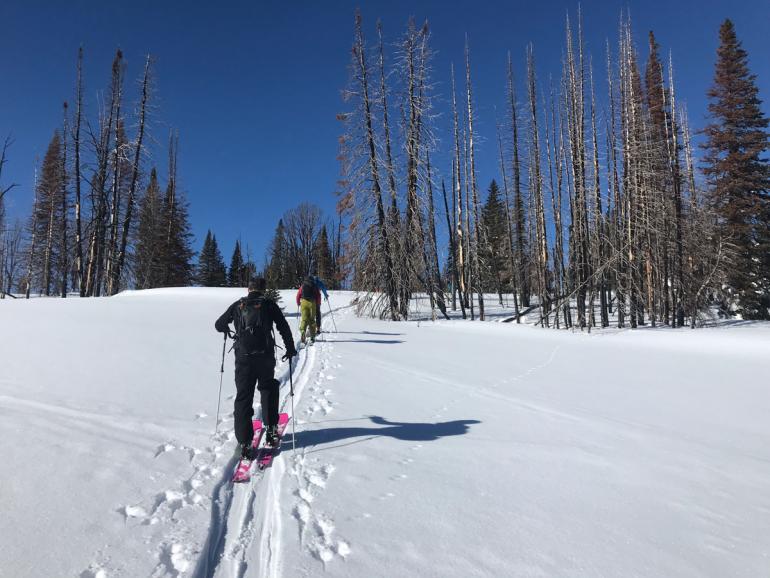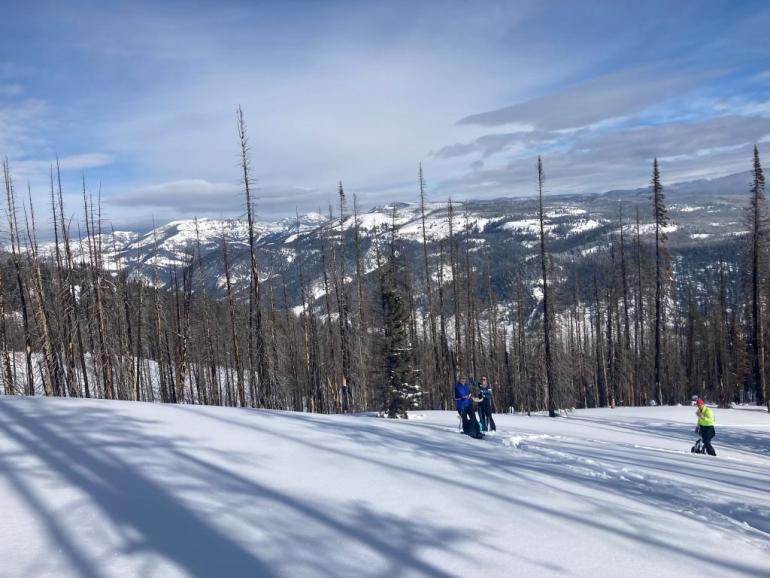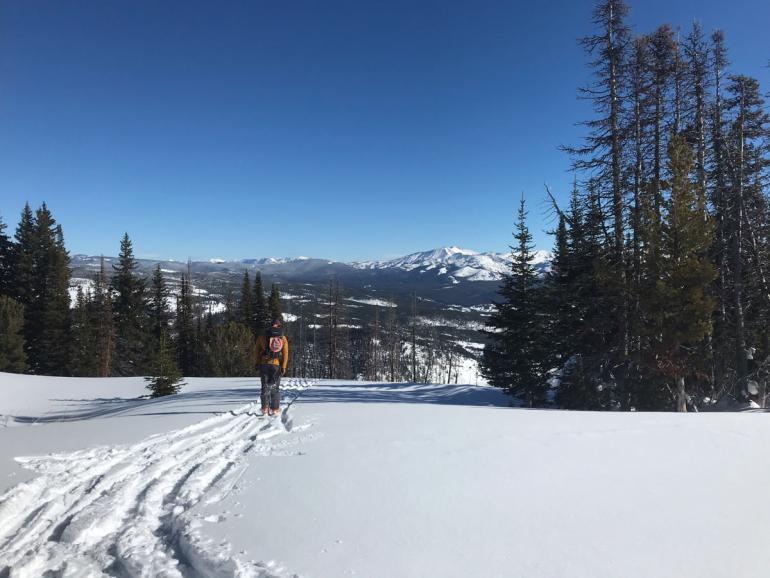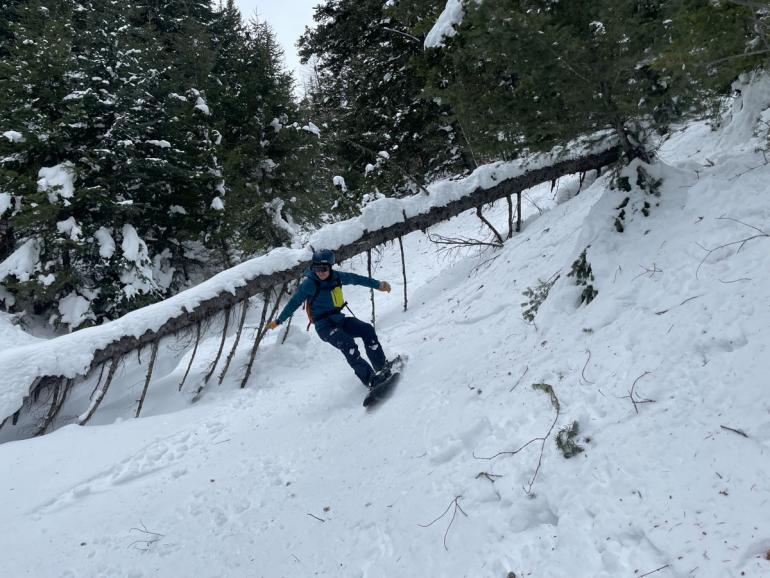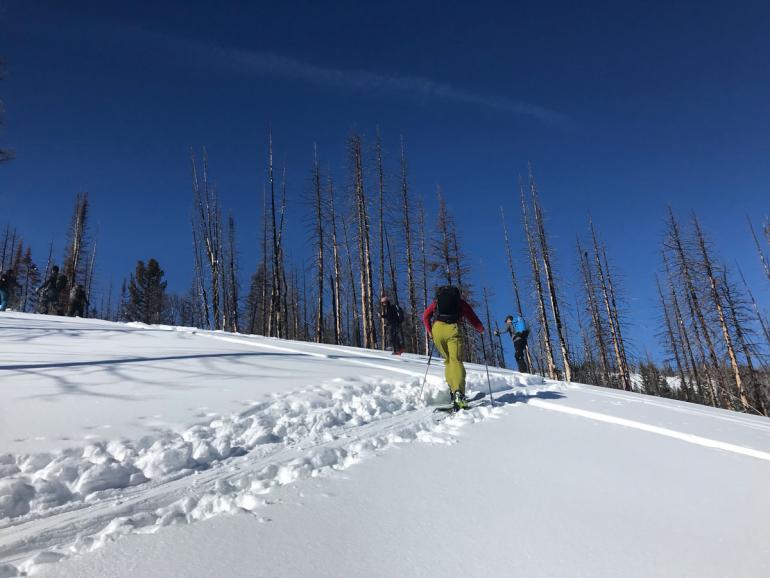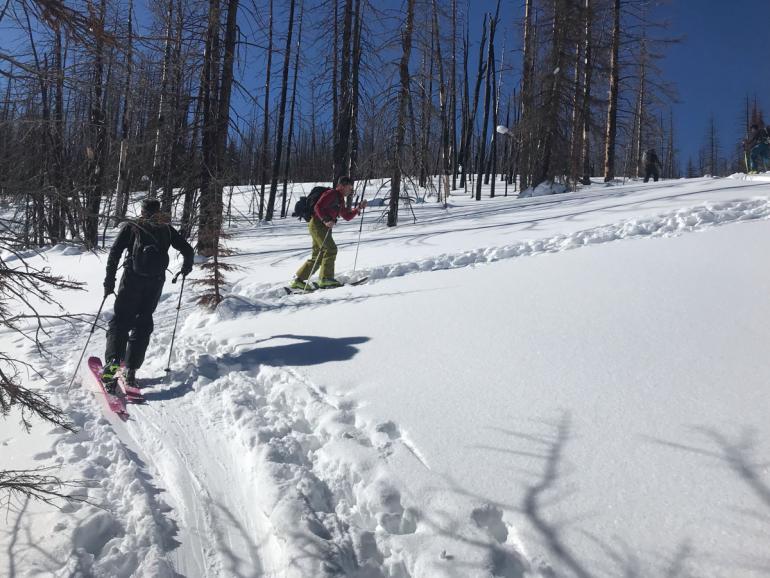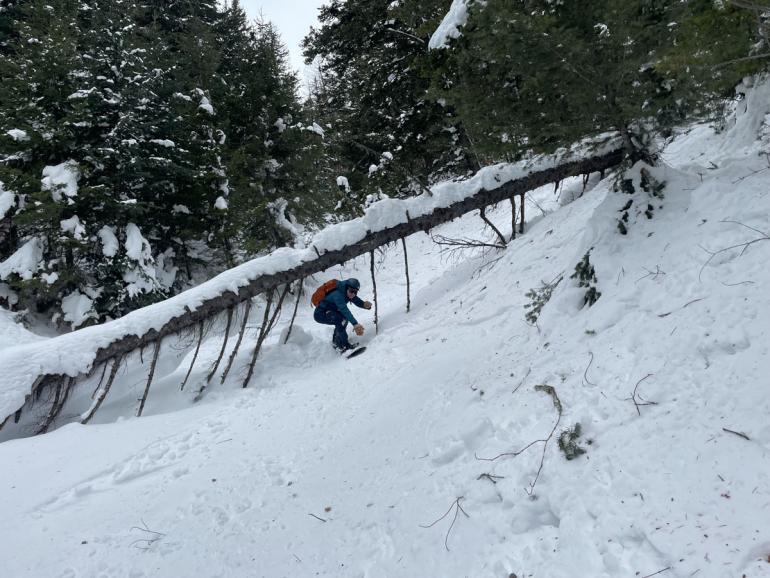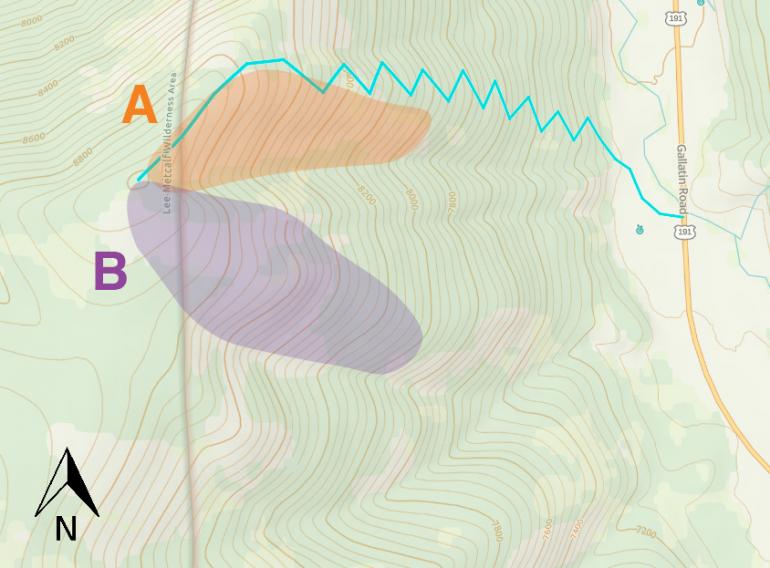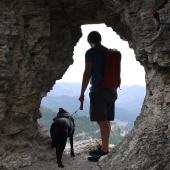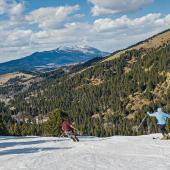Ski Tour: Bacon Rind
Approach Distance: 1.5 miles
Approach Gain: 2,000 feet
Skiable Vertical: 2,000 feet
Duration: 2 to 4 hours
Distance from Bozeman: 1.5 hours
Avalanche Hazard*: Moderate
Traffic: Moderate
Overview
There's nothin' better than a hot skillet of sizzling bacon in the morning. Unless, that is, you're pairing a few slices of greasy breakfast meat with one of our favorite ski tours in Yellowstone National Park: Bacon Rind. This area has a variety of aspects and angles, coupled with a consistently deep snowpack, which means you’ll find quality skiing here throughout the whole season. It's also great bang for your buck, with a sustained skiable pitch the entire way down—parting from the southwest-Montana trend of long, meandering approaches. Following wildfires in the summer of 2018, even more terrain has opened up in this area with an eerie burned-forest feel to it. Skiers heading to Bacon Rind should have some backcountry savvy, as avalanche-prone areas exist; it’s important to know what to look out for. Know the snowpack, ski one at a time, and if it’s not looking great, consider heading down the road to Telemark Meadows.
44.970809, -111.078609
Directions
Head south on Hwy. 191 past Big Sky. You'll pass a sign for Yellowstone National Park where the highway enters the Park. 7.5 miles past this sign, the road crosses a bridge over the Gallatin. Park in the pullout on the left (east) side of the road immediately after the bridge. If this pullout is full, there’s another one half a mile down the road. This area is quite popular and if you arrive late on a weekend, you might not find space to park, so have a backup plan.
Approach
There’s a good chance you’ll find an established skintrack here (or perhaps several). There are numerous options for ascending; the most direct is to switchback up along the right side of a prominent gully across from the pullout. After a real leg-burner of a climb, you’ll top out on a ridgeline with views of the southern Madison Range over its crest, and views of the southern Gallatin Range back the way you came. Not a bad place to be.
Descent
Descent options are also plentiful, and in general, the best skiing is just below the ridgeline, where trees are sparse enough to make sweeping turns. One popular option is the “Skillet” (A), an open face above the prominent gully that you skinned up next to. This descent is prime avalanche terrain, so make sure you’re confident in the snowpack. You can also head down the ridge to the south into the recently burned section (B) and find some lower-angle options. Just make sure you’re keeping an eye on the slope angle; there are steeper pitches strewn throughout this entire area.
No matter where you descend, as you get lower down, the trees become tight and you’ll have to pick your way through. Stay on the higher ground and avoid dropping into any of the gullies, lest you find yourself doing battle with deadfall and thick brush.
Avalanche Safety
The Bacon Rind area contains a wide variety of terrain, some of which can produce avalanches big enough to bury a person. Our description here includes zones that carry a higher avalanche risk—do your research before heading out, and know which slopes are of greater concern. Once on location, follow all accepted avy-safety precautions, including digging pits and avoiding questionable areas. Have a backup plan in case you encounter dangerous conditions. On the ascent, choose routes that minimize exposure to avalanche terrain, and descend one at a time through such terrain, keeping eyes on your partners.
*Avalanche hazard refers to terrain risk only. Always travel with a partner and rescue gear, evaluate conditions carefully, and check the forecast before heading out.



